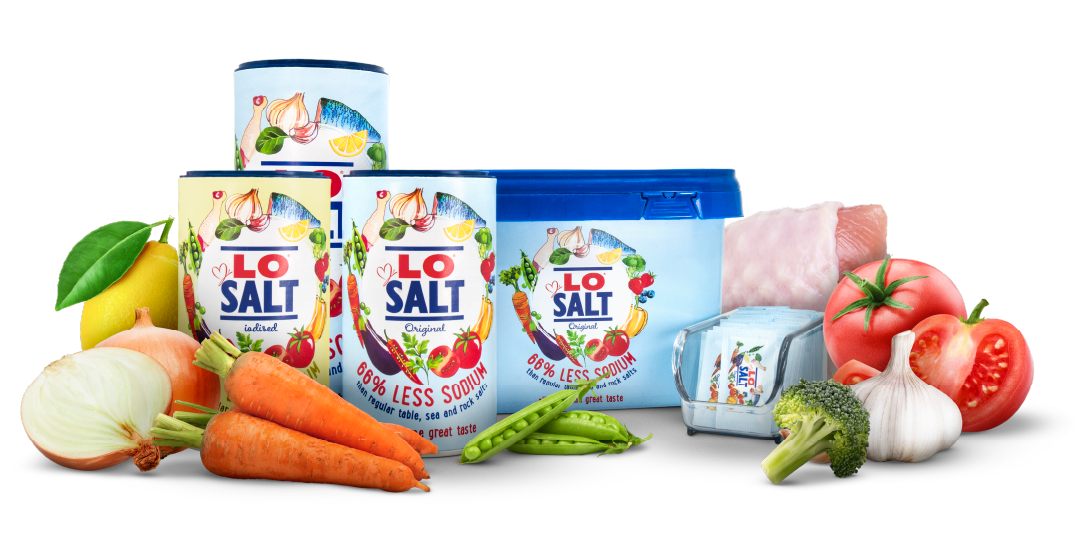FAQs
Below you’ll find some of the most frequently asked questions about LoSalt and salt health.
What is the daily recommended intake of salt?
We should all be aiming to lower our salt intake to 6g of salt a day, which is roughly a teaspoonful or 2400mg sodium. But don’t forget all the hidden salt you will be consuming in your diet – which for many people is already in excess of 6g.
What is the difference between salt and sodium?
Salt is made up of two components, sodium and chloride, and it is the sodium part which is linked to high blood pressure, cardiovascular disease and stroke. There is 387.6mg sodium in 1g of sodium chloride (i.e. regular table, sea and rock salts) but only 170mg sodium in 1g of LoSalt
Do different kinds of salt contain different amounts of sodium?
All regular salt, whether it’s table salt, sea salt or a rock salt such as pink Himalayan salt are all 100% sodium chloride, containing around 520mg sodium per serving. Only low sodium salts such as LoSalt contain less sodium.
Does LoSalt taste different to regular salt?
We would challenge you to tell the difference in a blind tasting! LoSalt customers tell us they can detect no compromise on flavour.
Is the potassium in LoSalt good for me?
In the UK we don’t consume enough potassium and potassium has been shown to help maintain healthy blood pressure. It is a valuable mineral to the body and particularly important in regulating the activity of muscles and nerves.However, check with your GP if you suffer from severe chronic kidney disease or if you are taking medication for high blood pressure.
How do I know if I have high blood pressure?
High blood pressure is often known as the “silent killer” because it has no symptoms. You may not even know you have it – yet in affects approximately one in four adults. For more information on where to get your blood pressure measured visit: https://www.nhs.uk/conditions/high-blood-pressure-hypertension/diagnosis/#where-to-get-a-blood-pressure-test
What are the best ways of reducing high blood pressure?
Regular exercise, maintaining a healthy weight and eating healthy diet all help. The more salt you eat, the higher your blood pressure will be – so one of the easiest and quickest ways to lower your blood pressure is to reduce your salt intake.
What is a healthy blood pressure?
The classic normal blood pressure is about 120 over 80, but anything below 140 over 90 (or an average of 135 over 85) is fine for most people. Above 160 over 100 (or an average above 150 over 95) is much more of a cause for concern. If your average blood pressure is above 135 over 85, you should be taking steps to bring it down or to stop it rising further.
Check out this Blood Pressure UK pdf for more info.
Can’t find the answer to your burning question? Please feel free to contact us directly…

